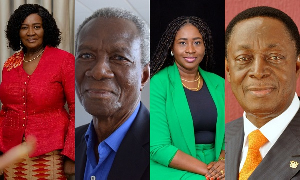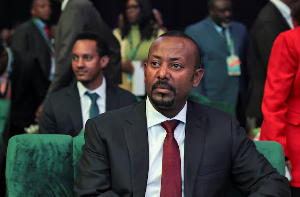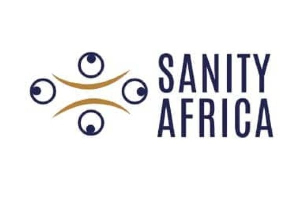Construction of dams involves long-term planning and assessment of their benefits against socio-economic and environmental impacts. In recent times people have begun to debate whether the positive contributions of dams and other large-scale civil engineering schemes may be outweighed by their associated negative impacts.
Ghana is in the process of developing another dam at Bui, in the north western part of the Brong Ahafo Region. It is for this and several other reasons that I have decided to retrace the paths of the neglected people who sacrificed their land, long periods of history, ancestral homes and properties of sentimental value to make way for the Akosombo Dam.
The article should serve as a useful feedback to enable decision makers, and residents of the Bui catchment in particular, learn, improve upon the positives and prevent recurrence of the colossal misjudgements that have shaped the lives of the Akosombo Dam resettlers.
It is no understatement to say that Ghana has benefitted from the construction of the Akosombo dam. Since the dam was commissioned by Osagyefo Dr. Kwame Nkrumah on 22 January 1966, the country has seen the supply of electricity to many towns and villages through the national grid. Electricity was supplied to neighbouring Togo and Benin which brought in foreign currency. Nkrumah saw the dam as a vital cog in the wheels of industrialisation that the country was going to embark upon. Unfortunately, Nkrumah’s government was overthrown one month after commissioning of the Akosombo dam.
One of the disadvantages of the Volta River Project was the destruction of vast tracts of arable land by the ensuing reservoir that was to become one of the largest man-made lakes in the world with irreversible environmental and social impacts on the country. Hundreds of villages and towns were submerged by the dam's reservoir. About 52 towns and villages were resettled to different parts of the country. The villagers who were not resettled were non-indigenous fishermen who were living along the banks of the tributaries comprising River Oti, Asukawkaw, Afram etc. These fishermen had come from all parts of the country to engage in fishing but many had lived in the area for ages. The people who were resettled by the government were only the indigenous people. The fishermen, including their families - men, women and children, faded into obscurity.
Do Ghanaians know what happened to the people who sacrificed and gave up a lot for the good of the country? Let me focus on the plight of one of the resettlement towns called Kwahu-Amanfrom in the Eastern Region. This town is about 50 miles from Nkawkaw and lies between the Afram Lake, which was formerly the Afram River, and a stretch of mountains that virtually divide Kwahu and Akim Abuakwa. It is just 17 miles from Begoro, the Fanteakwa District capital. The town is made up of people from Dukomang, Apaaso and Mankrong.
The people of present day Dukomang and Apaaso were living in the Kete Krachi district of the Volta Region. Their lands, farms and properties were submerged by the Oti River. Those from Mankrong on the other hand, were moved from a place called Oworobong in the Afram plains, less than ten miles from Kwahu-Amanfrom.
When it became clear that, there was the need to resettle people whose towns and villages would be destroyed by the Volta Lake, the government sent emissaries to the affected people to brief them about their situation. They were promised electricity, good drinking water and other amenities in their new townships. Although leaving their ancestral homes was a painful pill to swallow, the people realised the inevitability of their situation. They were however consoled by the fact that the new townships would have better and modern facilities. To-date, most of the resettlement towns have no electricity, even though the dam was mainly built for the production of energy.
The first injustice meted out against the resettlers was the blatant abuse of their human rights by the government. The Volta River Authority which was responsible for resettling the communities affected directly by the dam, sent officials (called Enumerators) to all the towns and villages to take stock of the properties. They arrived at my town Dukomang in 1963. I was then a little boy of nine years old in Primary Class 4. Since my father, the late Nana Twerefuor Tim III was the chief of the town, I had first hand knowledge of what was going on. It was during the counting of the properties (mainly houses), that the injustice was committed against the people.
Although they were being remunerated by the VRA for doing their job, nevertheless, the Enumerators were fed and accommodated by the people. They counted and marked all the houses and then counted the number of people in each household. As we all know, in Ghana, there are a lot of compound houses with many rooms, kitchens etc. There may be a number of families living in these compound houses but the house may be owned by one person.
The enumerators counted these big compound houses as one and allocated a single number for each of them. The injustice here is that, only one house was built for each household in the new resettlement town regardless of the number of rooms in their previous house in the old town or village. Thus, big compound houses containing ten, fifteen or more families were allocated a one bedroom house in the new township. This is where their human rights were breached and I think it was a gross abuse of power against innocent citizens. But the worst was yet to come.
The VRA started moving the people of Dukomang to our new township, Kwahu-Amanfrom in June 1964 and completed the move in the middle of July. I was in the last lorry with my father and some of his sub-chiefs. The town was as quiet as a cemetery. There were tears in the eyes of many as my father poured libation at the outskirt. Every physical entity left behind was to be slowly but surely inundated by the impounding reservoir.
The new town was a big disappointment to us, especially we the children. We thought there would be electricity in the town. We didn’t know it was something that was going to happen in the future. There was more disappointment in store for the whole population. The houses built were meant to be three bedroom houses as we later found out but at the time, only one bedroom was completed. Families who were living in big compound houses in the old town found they were allocated a one bedroom house. There were no bathrooms or kitchens. Just imagine one bedroom for a household of say 4, 6, 10, 15 or more people! There was nowhere to keep our belongings, cooking utensils etc. People were forced to sleep anywhere. It was horrible. There were four public toilets for a population of about four thousand. Our parents and adults could only wash at night since there were no bathrooms. They later had to make do with improvised bathrooms built with palm branches. How could people who had given up so much for the good of the country be treated like that?
The questions to be asked are as follows:
a) What action plans did the VRA initiate in respect of the people who would ultimately be resettled as a direct result of the dam?
b) Why did the government have to wait for so long before rushing the building of the resettlement towns? Almost half of our town was not completed before the evacuation began. The people of Apaaso had to be temporarily housed at Domenase, about twelve miles away because their part of the town was not ready. Imagine the inconvenience of moving from the Volta Region to the Eastern Region without reaching your destination until nearly six months later.
c) How did they expect the settlers who had been moved hundreds of miles from their ancestral towns and villages to cook and prepare their meals in the open without kitchens in a one bedroom house?
In fact, the stress and the inconveniences experienced by the people during the early days at Kwahu-Amanfrom were unimaginable. Food was a problem as the people had no farms from which to harvest any foodstuffs. Some towns in the Kwahu Traditional Area donated foodstuffs like plantain, cocoyam, cassava and maize to the settlers as a goodwill gesture. It was a one-off donation.
The VRA supplied food items like maize (yellow corn), cooking oil, egg powder, sardines, corn bread, wheat and pork luncheon donated by the American government. The items were initially supplied each week for about a year and then changed to every fortnight and later on stopped altogether. The corn bread could only last a few days because there was no way to preserve them. As children, it was a novelty for us but our parents were clearly hurting because they were used to growing their own foodstuffs. I must say that yam was the major crop grown by people in the Kete-Krachi district where we were domiciled. Cassava, plantain, cocoyam and maize were also cultivated. Imagine such people being fed with yellow corn, wheat and corn bread! Dear reader, I am telling you all these to elucidate the sacrifices which may be hitherto unknown to you.
When we arrived, our new township was surrounded by thick forests with cocoa trees and lots of palm trees everywhere. The surrounding lands were acquired by the government for the settlers. For a short time, we were able to grow plantain, cocoyam, cassava and maize for our consumption. Then the unthinkable happened. The VRA or the Ministry of Agriculture decided to introduce mechanised farming to the people. I do not know whether this policy was introduced in all the 52 towns and villages affected. But I can confirm that, there were two neighbouring resettlement towns near Kwahu Amanfrom (New Oworobong/Amatey and Dedeso) where they were also introduced to mechanised farming, a novelty in many parts of the country at the time.
The resettlement strategy was synonymous to the communist and eastern-style ideology that was being experimented with at the time in most of the newly independent countries. All the settlers were reduced to a common level irrespective of age, social status and the value of their lost assets.
I shall discuss the benefits and impacts of mechanised farming, education of the children and how the resettlers and their descendants coped in their botched socially engineered townships. Perhaps Ghanaians have a moral obligation to go back in history and reassess the raw injustice, sacrifice and destruction of a people for the production of energy that ushered Ghana into modernisation. It was thievery - a typical example of a nation robbing Peter to pay Paul.
Opinions of Monday, 5 July 2010
Columnist: Nyarko, Kwasi














